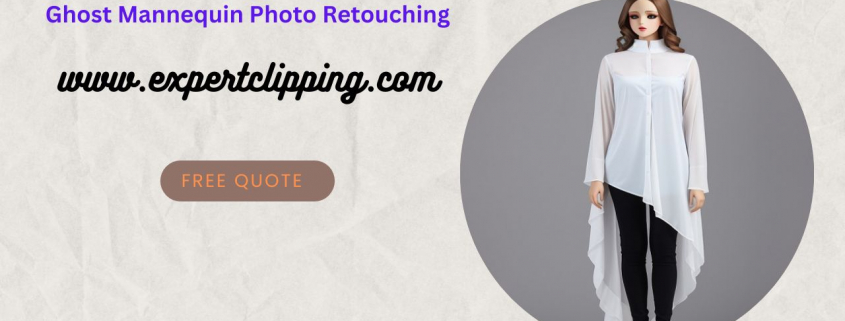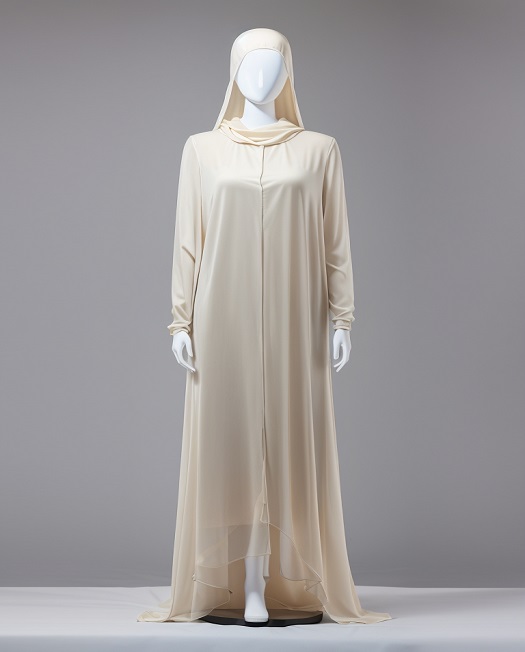
Introduction
Ghost mannequin photo retouching is a technique widely used in the fashion and e-commerce industries to create visually appealing product images. It involves removing the mannequin or model from the clothing item while maintaining the natural shape and fit. This technique gives the illusion of a floating garment, providing a clean and professional look that highlights the product’s features. In this article, we will explore the benefits, process, tools, industry applications, best practices, common challenges, and SEO benefits of ghost mannequin photo retouching.

Benefits
The use of ghost mannequin photo retouching offers several advantages for businesses:
- Enhanced product presentation: Ghost mannequin technique allows customers to visualize the clothing item’s fit and shape without any distractions. This leads to improved customer engagement and increased sales.
- Time and cost savings: By using ghost mannequin retouching, businesses can eliminate the need for physical models, reducing expenses associated with model fees, logistics, and studio rental. It also saves time in the post-production phase as the retouching process is more efficient compared to traditional methods.
- Consistency in product images: Ghost mannequin retouching ensures consistency in product photography, creating a unified look across an entire catalog or website. This consistency helps establish a strong brand identity and builds trust with customers.
Process
The ghost mannequin photo retouching process involves the following steps:
- Image preparation: The clothing item is carefully photographed on a mannequin or model, capturing multiple angles and details.
- Mannequin removal: Using image editing software and techniques like clipping path or layer masking, the mannequin or model is removed from the image while preserving the shape and contours of the garment.
- Neck and sleeve joint reconstruction: In this step, the neck and sleeves of the clothing item are reconstructed by digitally blending different image elements, ensuring a seamless and natural look.
- Image editing and retouching: The final touches are applied to the image, including color correction, exposure adjustment, and any additional retouching required to enhance the overall appearance.
Tools and Techniques
To achieve high-quality ghost mannequin retouching, professionals use various tools and techniques, such as:
- Image editing software: Adobe Photoshop is the industry-standard software used for ghost mannequin retouching. It provides a wide range of tools and functionalities to manipulate and enhance images.
- Clipping path: This technique involves creating a precise outline or path around the garment to separate it from the background. It allows for accurate isolation and removal of the mannequin.
- Layer masking: Layer masking enables the selective visibility of different image elements. It helps in blending the neck and sleeves seamlessly while maintaining the integrity of the garment.
- Image blending: To create a natural-looking garment, image blending techniques are used to combine multiple images and adjust lighting, shadows, and textures.
Industry Applications
Ghost mannequin photo retouch finds widespread applications in the fashion and apparel industry, e-commerce websites, and catalog production. It enables businesses to showcase their products effectively and attract potential customers with visually appealing images.
Best Practices
To achieve the best results with ghost mannequin retouching, it is essential to follow these best practices:
- High-quality images: Start with well-lit, high-resolution images to ensure the best possible outcome during the retouching process.
- Consistency in lighting and angles: Maintain consistent lighting conditions and angles across all product images to create a cohesive and professional look.
- Attention to detail: Pay close attention to small details like wrinkles, creases, or loose threads to ensure the final image looks flawless.
- Skilled retouching professionals: photo retouching requires expertise in image editing techniques. Hiring skilled professionals or outsourcing to reputable retouching services can ensure high-quality results.
Common Challenges
While ghost mannequin retouching offers numerous benefits, it also comes with a few challenges:
- Complex garment structures: Some clothing items, like dresses with intricate designs or multi-layered fabrics, can pose difficulties during the retouching process. Skilled retouching professionals can overcome these challenges with attention to detail.
- Color matching: Achieving accurate color representation can be challenging due to variations in lighting conditions and individual monitor settings. Careful color correction is necessary to maintain consistency.
- Invisible mannequin retouching: In cases where the mannequin or model is wearing a garment that exposes parts of the body, additional retouching techniques may be required to create a realistic and appealing final image.

SEO Benefits
Ghost mannequin photo retouching can also have positive impacts on search engine optimization (SEO) efforts:
- Improved search engine rankings: High-quality product images resulting from ghost mannequin retouching contribute to a better user experience. Search engines value websites that offer engaging visuals, leading to improved rankings.
- Increased organic traffic: Appealing product images are more likely to be shared and linked to by users, driving organic traffic to the website. This can boost visibility and attract potential customers.
- Higher conversion rates: When customers can clearly see the details and fit of a garment, they are more likely to make a purchase. Ghost mannequin retouching helps increase conversion rates by providing a compelling visual representation of the product.
Conclusion
Ghost mannequin photo retouching is a powerful technique that enhances product presentation, saves time and costs, and ensures consistency in product images. By following best practices and overcoming common challenges, businesses can benefit from improved SEO rankings, increased organic traffic, and higher conversion rates.

